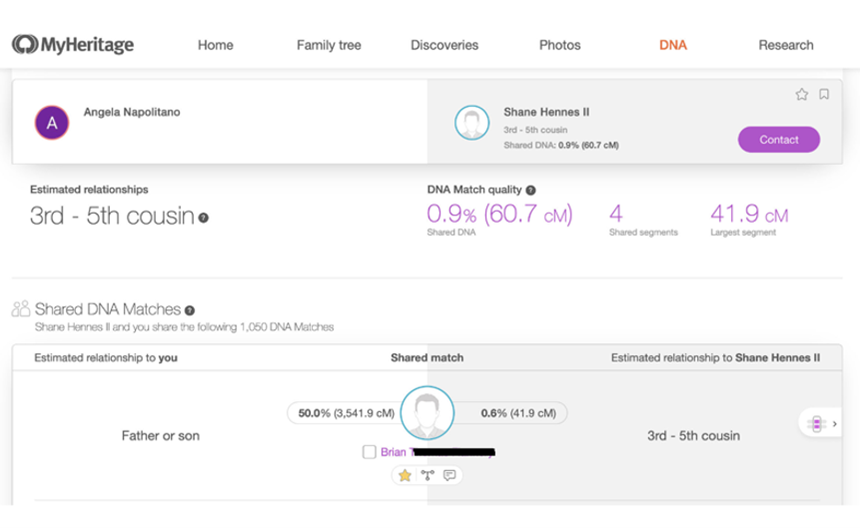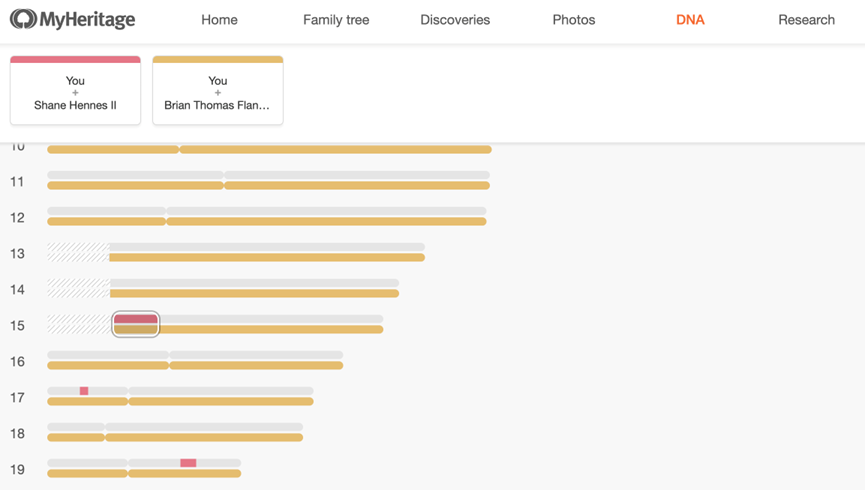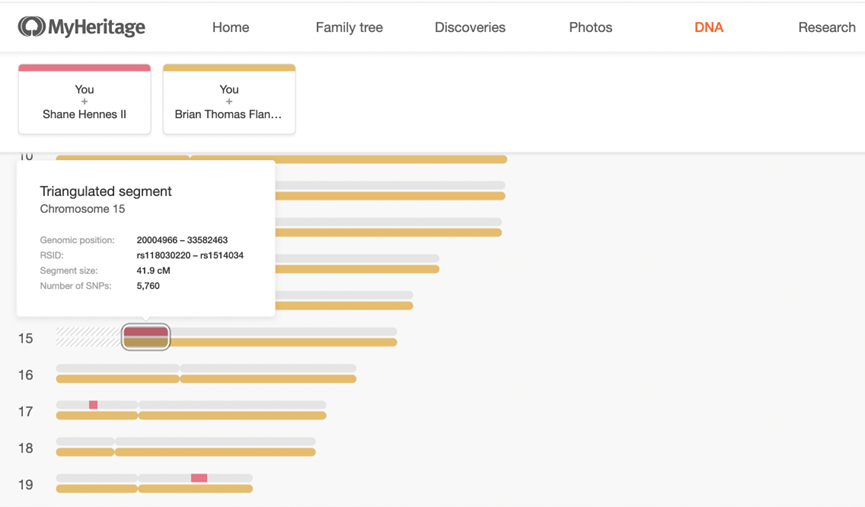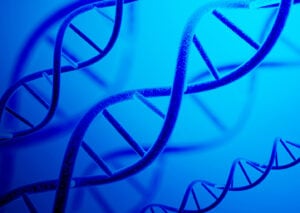 We can use DNA as another source in our genealogical research toolbox to help discover family connections and break down brick walls. DNA evidence and traditional documentation, like vitals and census records, should be used to help prove relationships between two people. Many DNA tools exist on different platforms that can help us find significant matches which can reveal common ancestors between two people.
We can use DNA as another source in our genealogical research toolbox to help discover family connections and break down brick walls. DNA evidence and traditional documentation, like vitals and census records, should be used to help prove relationships between two people. Many DNA tools exist on different platforms that can help us find significant matches which can reveal common ancestors between two people.
When I began to utilize DNA in my family research, I was mystified by the idea of “triangulating” DNA matches. I discovered that it was simply another strategy for visualizing a few matches that all share a common ancestor.
“Triangulated segments are segments that all the selected DNA Matches share . This capability is important for understanding DNA Matches' relationships because triangulated segments are more likely to be inherited from a common ancestor.”1
Looking at the following example of three fictitious DNA matches, Sue, Bob, and John, they all need to share the same DNA segment for them to triangulate. These shared matches would form a triangle if drawn out, with the matches representing the points of the triangle, and the lines representing the same segment of shared DNA:
Another way to look at the triangulation of DNA matches is to understand shared match lists, which all DNA platforms provide for their users. The largest DNA database is hosted on Ancestry.com, with over 30 million members and counting. 2 On Ancestry, a researcher can easily use the shared match list for each DNA match to find possible relatives that share an ancestor. However, Ancestry does not provide segment data—that is, a shared segment's start and end locations on the chromosome. Without more information, a researcher cannot be sure whether these matches point to a common ancestor, or from which parent family line the match descends. Additionally, the shared match list on Ancestry has a preset match threshold, and will only display matches which share 20 centimorgans or more. 3 If you are searching for your 5-6th cousins, who typically only share 15-21 centimorgans on average, your shared match list on Ancestry may not include what you are looking for. 4
Instead, a researcher should upload their DNA test results to some of the other free DNA platforms that will supply the segment data between shared matches, like MyHeritage, FamilyTreeDNA, or GEDmatch. Here is an example of a triangulated match from my uploaded DNA test results on MyHeritage:
As you can see, the small three-line bar symbol on the lower right, next to the shared match name “Brian,” signals that Brian triangulates with both Shane and me. This three-line bar symbol means that all three of us share a piece of segment data on at least one chromosome of DNA. If I hover over that symbol, it will show how many triangulated segments we share, which in this case was one segment. If I then click on that symbol, it will display the chromosome map, which visually shows the location where these three matches share a segment, shown outlined here on chromosome 15:
Finally, if I click on the circled segments on chromosome 15, MyHeritage will provide the exact locations, with start and end positions, where Shane, Brian, and myself share a segment of DNA:
With this segment data information, any other DNA matches in my shared match list that I might discover in the future which share this same segment of DNA from chromosome 15 will more than likely descend from that same common ancestor. In this case, Brian, Shane, and I all descend from my great-grandfather, John, since Brian and Shane are descendants of one of my mother’s paternal siblings.
This method of using triangulated DNA matches has proven to be extremely helpful when researching distant ancestors and cousins, especially when there doesn’t exist enough direct evidence in traditional documentation sources to prove a relationship. The potential ancestor of the shared match might have resided in a time and place for which vital records are not available. Triangulated segments between shared matches are a valuable resource for proving a common ancestor, helping researchers solve mysteries and answer questions which could not have been answered with traditional research methods.
Need help interpreting your DNA results? Speak with one of our genealogists to learn what your DNA results might open for you in your genealogical journey. Book your consultation today!
Notes
1 MyHeritage contributors, “What are triangulated segments in the Chromosome Browser – One to many?” MyHeritage HelpCenter. https://faq.myheritage.com/en/article/what-are-triangulated-segments-in-the-chromosome-browser-—-one-to-many. Viewed 18 August 2022.
2 Brishette Mendoza and Amadou Diallo, "The Best DNA Testing Kit," The New York Times, 10 December 2021. https://www.nytimes.com/wirecutter/reviews/best-dna-test/. Viewed 18 August 2022.
3 Roberta Estes, “Ancestry Only Shows Shared Matches of 20 cM and Greater – What that Means & Why it Matters”, DNAeXplained, 12 May 2022. https://dna-explained.com/. Viewed 18 August 2022.
4 Blaine Bettinger, “The Shared cM Project 4.0 tools v4." https://dnapainter.com/tools/sharedcmv4. Viewed 18 August 2022.
Share this:
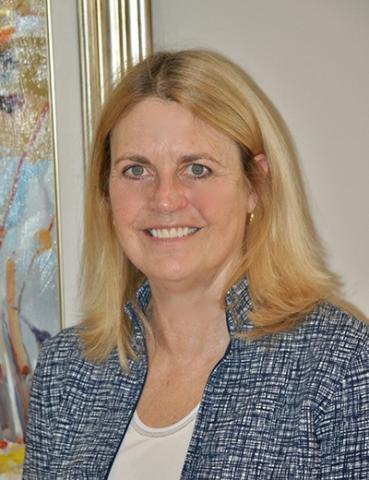
About Angela Napolitano
Angela Napolitano is a researcher on our Research and Library Services Team. She has a BS in Computer Science and Applied Mathematics from Stony Brook University in New York. She is a certificate holder from the Boston University Genealogical Research Certificate program. For the past few years, she has been volunteering at NEHGS/American Ancestors and assisting with the Catholic Records Project. She has frequently traveled to Italy to research ancestors in the Campania and L’Aquila regions. Her interests include America, Ireland, Italy, and DNA. She currently lives in Boston and contributes to genealogy study groups across the country.View all posts by Angela Napolitano →

